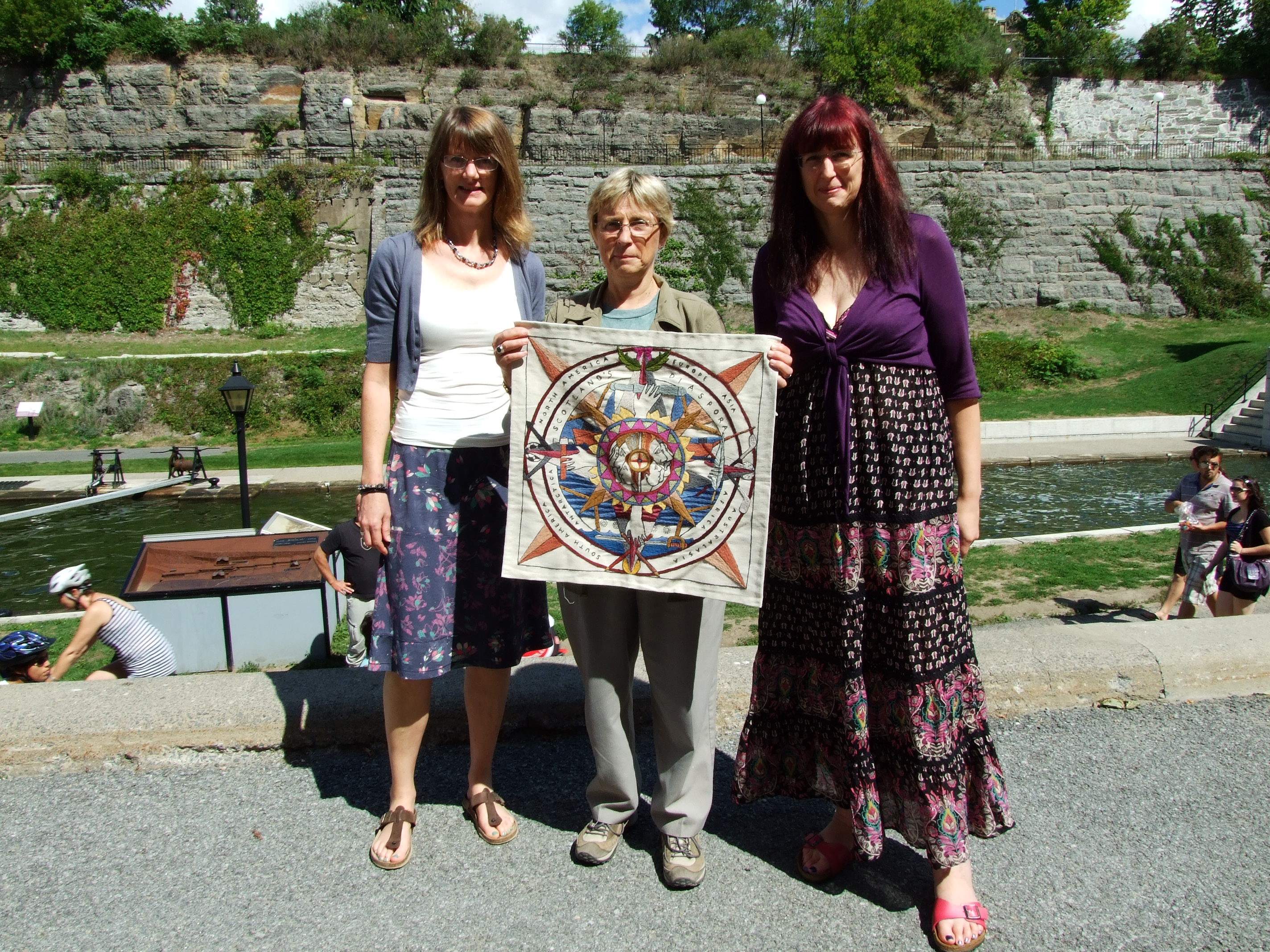Two members of the Diaspora Tapestry team,
Gillian Hart and Yvonne Murphy have just returned from a whistle-stop research trip
to Canada, meeting with Scots and the descendants of Scots in Ontario, Quebec,
Nova Scotia, Manitoba and British Columbia. And wherever they went they found
people, from taxi drivers to waiters and everything in between, who proudly
proclaimed: ‘Oh you’re from Scotland? My
grandmother/father etc came from Scotland too!’
ONTARIO
The team’s ambitious tour began in
Guelph, a city in Southwestern Ontario, where they met with Graeme Morton,
Chair of the Scottish Studies Foundation at Guelph University (who comes from
Haddington in East Lothian!). He described
the story of John Galt (1779-1839) born in Irvine, Ayrshire, and recognised in
Scotland as a novelist, is well known in Canada for planning the city of Guelph
as a town based on an agricultural settlement with generous space provided for
a market. John Galt Day has been celebrated each August in Guelph since 2006
with the raising of the “John Galt Flag”, a Kirkin’ ceremony, and other
community activities. Scots were also responsible for establishing the Ontario
Agricultural and Veterinary colleges in Guelph.
Travelling on to Ottowa, our travelling
team discovered that the parliament buildings are sited on “The Hill”, the former
position of the fort known as Barrack Hill. Bytown, as Ottawa was originally
known, was named in honour of Lieutenant-Colonel John By, the man was
responsible for the Rideau Canal. In 1832 the canal was constructed as a secure
route between Montreal and the British naval base at Kingston which allowed shipping
to avoid a stretch of the St Lawrence River along the New York border which was
vulnerable to attack in the event of another war with the United States. It
became a major trading route, especially for the lumber industry.

Gillian and Yvonne were invited to
enjoy an iced lemon drink with Robin Etherington, Executive Director of the
Bytown Museum, whilst they heard about the humid conditions and the threat of
cholera endured by the early settlers of Bytown. Robin highlighted the role of Scottish
stonemasons in the construction of the canal. She is pictured here (centre) with Yvonne (left) and Gillian (right), in front of the Rideau Canal itself.
The Commissariat erected in 1827
as a storehouse and military depot during the construction of the Rideau Canal,
houses the museum and is situated a few steps away from the canal, before it
reaches the Ottawa River. This stone building was designed by Thomas McKay of
McKay and Redpath, Architects. McKay and Redpath were both trained stonemasons
appointed by John By. McKay built his own settlement with thriving industries, known
as New Edinburgh, on the eastern side of the Rideau Falls. Earnscliffe, a
Victorian manor built by McKay, became the official residence of John A MacDonald,
the first Prime Minister of Canada in 1867.
Today it is the residence of the British High Commissioner to Canada.
Bethany Basaillon, Executive Director
of the Scottish Society of Ottawa and Director of the Ottawa City Piping
College arrived a little later and showed great enthusiasm for the Tapestry
project. Having just recently been present at Piping Live 2012 in Glasgow, she is a regular visitor to Scotland
with her Sons of Scotland Pipe Band (Camp Argyll Number 26) and promised to
join us in 2014 for the Scottish Diaspora Tapestry Homecoming events. The Sons of Scotland Benevolent Society was
set up in Canada in 1876 to support Scottish immigrants. The Society continues
today to celebrate Scottish culture and heritage. A list of stitchers and
stories will no doubt follow from this important connection!
